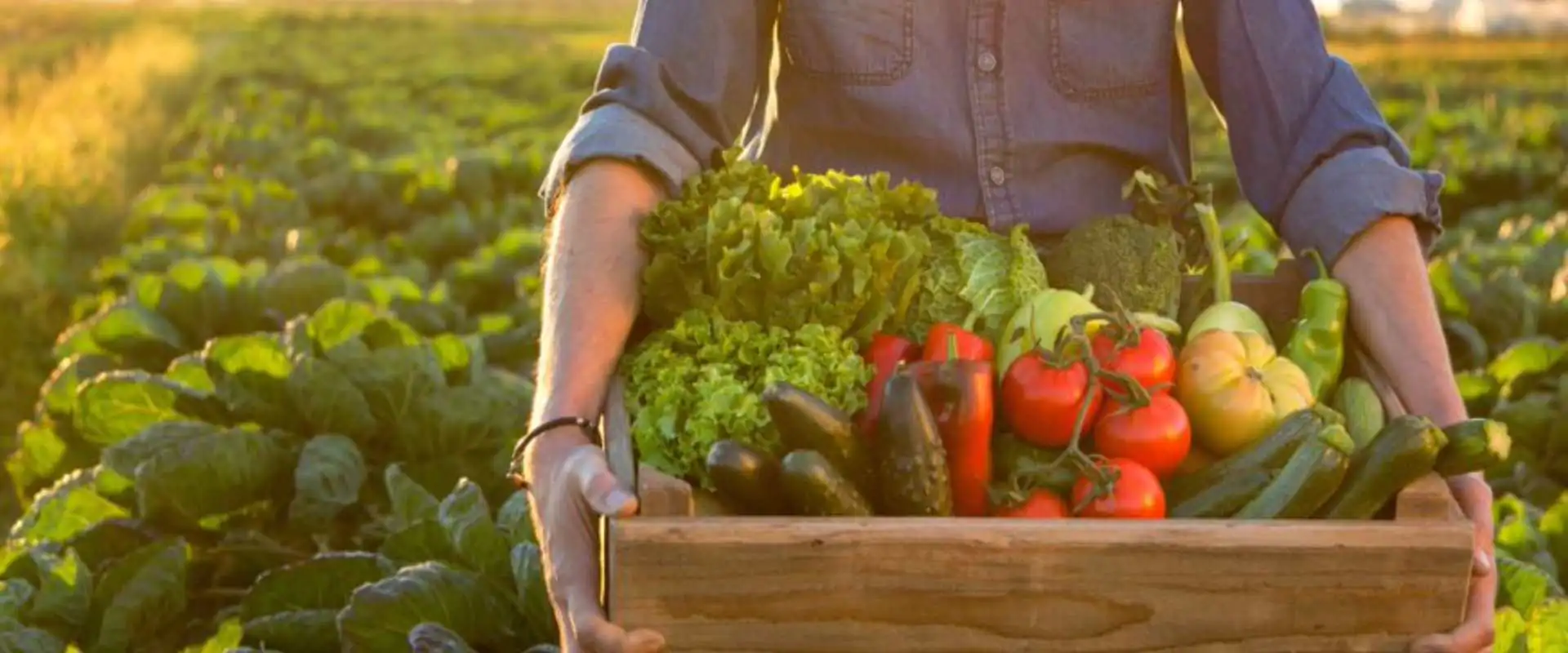Organic farming is an agricultural system that emphasizes the use of naturally occurring, non-synthetic inputs to promote sustainability and ecological balance. It avoids the use of synthetic fertilizers, pesticides, genetically modified organisms (GMOs), and growth hormones, focusing instead on biological methods such as crop rotation, composting, and biological pest control.
Key Types of Organic Farming
Pure Organic Farming: This type strictly avoids all unnatural chemicals and uses only natural sources for fertilizers and pest control.
Integrated Organic Farming: Combines pest management and nutrient management to meet ecological needs.
Top 5 Organic Farming Methods
Crop Rotation
Crop rotation is a fundamental method in organic farming that involves growing different crops in the same area in a sequential manner. This practice helps maintain soil health and fertility by ensuring that the same nutrients are not depleted continuously. By rotating crops, farmers can control pests and weeds more effectively, as these unwanted organisms often rely on specific crops to survive. For instance, rotating between legumes and cereals can replenish nitrogen in the soil, reducing the need for synthetic fertilizers. This method not only enhances soil fertility but also promotes biodiversity and reduces the risk of soil-borne diseases.
Green Manure
Green manure is another effective organic farming technique that involves cultivating plants specifically to be plowed back into the soil. These plants, often legumes or grasses, are grown to enhance soil fertility and organic matter content. Once mature, they are incorporated into the soil, where they decompose and release nutrients. This process improves soil structure, increases nutrient availability, and supports biodiversity. Green manure crops also help suppress weeds and reduce soil erosion, making them a valuable tool for maintaining healthy and productive soil. By using green manure, farmers can reduce their reliance on external fertilizers and create a more sustainable agricultural system.
Composting
Composting is a key component of organic farming, involving the breakdown of organic waste into a nutrient-rich fertilizer. This process transforms kitchen scraps, farm waste, and other organic materials into a valuable resource that enhances soil health. Composting improves soil structure, increases its water-holding capacity, and supports microbial activity, which is essential for nutrient cycling. By reducing waste and creating a natural fertilizer, composting helps farmers minimize their environmental impact while improving crop yields. It is a cost-effective method that also reduces the need for synthetic fertilizers, making it an attractive option for sustainable agriculture.
Integrated Pest Management (IPM)
Integrated Pest Management (IPM) is a holistic approach to pest control that combines biological, cultural, mechanical, and sometimes chemical methods to manage pests effectively. This method minimizes environmental impact by reducing reliance on synthetic pesticides and promoting sustainable pest control strategies. IPM involves understanding the life cycles of pests and using techniques such as introducing beneficial insects, practicing good hygiene, and modifying agricultural practices to prevent pest infestations. By integrating these methods, farmers can maintain ecological balance, reduce the risk of pesticide resistance, and protect beneficial organisms. IPM is a flexible approach that can be tailored to specific farming conditions, making it a valuable tool for organic farmers.
Cover Cropping
Cover cropping involves planting crops between crop cycles to protect and enrich the soil. These crops are not harvested for food but serve to reduce soil erosion, improve soil health, and provide habitat for beneficial insects. Cover crops can be legumes, grasses, or other plants that help retain soil moisture, suppress weeds, and add organic matter to the soil. By using cover crops, farmers can maintain soil fertility during periods when the land would otherwise be left bare. This method supports biodiversity, enhances ecosystem services, and contributes to a more resilient and sustainable agricultural system. Cover crops are an essential component of organic farming, as they help maintain soil health and promote ecological balance.
Benefits of Organic Farming
Organic farming offers numerous benefits for both the environment and human health. Here are some key advantages:
-
1
ENVIRONMENTAL BENEFITS
-
2
HEALTH BENEFITS
-
3
ECONOMIC & SOCIAL BENEFITS
-
4
EDUCATIONAL & COMMUNITY BENEFITS
-
5
CULTURAL & HERITAGE BENEFITS
Environmental Benefits
Organic farming reduces chemical usage, preventing soil and water contamination. Practices like crop rotation and cover crops sequester carbon, mitigating climate change. Healthy soil structure reduces erosion and preserves land productivity. Organic farms promote biodiversity, supporting a balanced ecosystem. They also result in lower greenhouse gas emissions and energy use. Overall, organic farming contributes to a cleaner environment and sustainable agriculture.
Health Benefits
Organic produce is free from synthetic pesticides and fertilizers, making it safer for consumption. Organic farming preserves nutritional quality, often resulting in higher concentrations of vitamins and minerals. This ensures consumers have access to healthier food options. By avoiding chemicals, organic farming protects consumers from potential health risks associated with chemical residues.
Economic and Social Benefits
Organic farming promotes sustainable practices that maintain natural resources over time. It enhances resilience to climate change and supports local economies by relying on local resources and labor. This boosts local job creation and community development. Organic farming ensures long-term sustainability and economic stability.
Educational and Community Benefits
Organic farms serve as educational hubs, teaching sustainable farming practices through workshops and tours. They engage with communities through farmers’ markets and CSA programs, fostering community bonds. These interactions promote local produce and build stronger community ties, enhancing social cohesion and awareness about sustainable agriculture.
Cultural and Heritage Benefits
Organic farming preserves traditional and indigenous techniques, maintaining cultural heritage and knowledge. It supports local and heirloom crop varieties, ensuring genetic diversity and preserving unique crops. This helps maintain agricultural biodiversity and cultural identity, keeping valuable farming practices alive for future generations.
Future Trends in Organic Farming
Some futuristic trends in organic farming that are shaping the future of agriculture are mentioned below:
Use of Drones
Drones are increasingly being used for various tasks in organic farming, such as monitoring crop health, assessing soil conditions, and even applying organic pesticides and fertilizers. They provide real-time data and help farmers make informed decisions, improving efficiency and reducing labor costs.
Vertical Farming
Vertical farming involves growing crops in stacked layers, often in controlled indoor environments. This method maximizes space usage and allows for year-round production, making it ideal for urban areas. It also reduces the need for pesticides and conserves water.
Precision Agriculture
Precision agriculture uses technologies like GPS, IoT sensors, and data analytics to optimize farming practices. In organic farming, this can mean precise application of water, organic fertilizers, and pest control measures, leading to better yields and resource conservation.
Regenerative Agriculture
Regenerative agriculture goes beyond organic farming by focusing on restoring soil health and biodiversity. Practices include cover cropping, no-till farming, and holistic grazing. These methods not only improve soil fertility but also sequester carbon, helping to combat climate change.
Biotechnology and Natural Inputs
Advancements in biotechnology are leading to the development of natural inputs like bio-pesticides and bio-fertilizers. These products are derived from natural sources and are designed to be more effective and environmentally friendly than traditional organic inputs.
Conclusion
Organic farming’s future is promising due to consumer demand for healthier, more sustainable food. Environmental concerns and ethical values drive this trend. Consumers prefer organic products for their perceived health benefits and higher quality. They are willing to pay a premium, making organic farming economically viable. Positive media coverage and marketing strategies further boost demand, encouraging farmers to adopt organic methods. This growth supports sustainable agriculture and aligns with consumer values.
Related Articles
- How We Drove 29% Profit Growth and Record Sales for a Pharmaceutical Company Through Pharma Market Intelligence
- How We Helped a Leading Online Game Developer Navigate and Capitalize on the Growing Virtual Goods Market
- Market Segmentation Helps a Leading Transportation and Logistics Industry Client Refine Their Marketing Strategies



